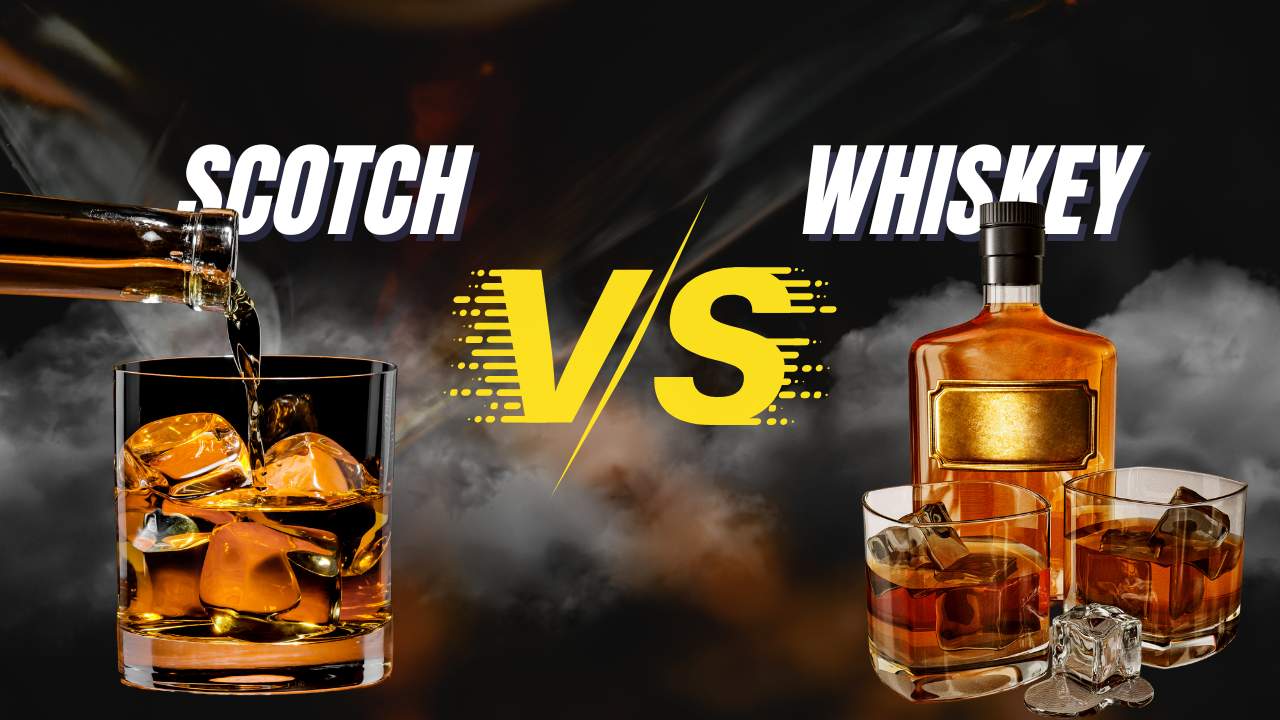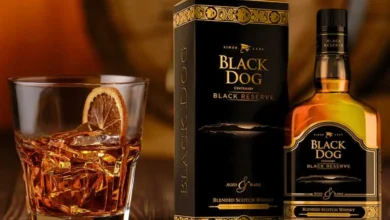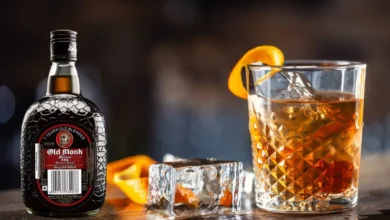Difference Between Scotch and Whiskey 2024

Know the difference between scotch and whiskey is essential for both specialists and casual drinkers alike. This distinction is not just about geographic origin or spelling but also involves differences in production, ingredients, and taste profiles. With whiskey being produced in various regions, including the United States and Canada, and scotch being exclusively distilled in Scotland, the complexities of these spirits offer a rich tapestry of flavor and tradition. Exploring the nuances between scotch vs whiskey reveals the depth of skill and tradition that defines the distilling process and highlights the cultural significance of these beloved beverages.

This article will guide into the historical background of both spirits, comparing the specific methods of production and aging that give scotch and whiskey their distinct characteristics. By examining the difference between scotch and whiskey, including key factors such as the aging process, ingredient selection, and regional influences from Scotland to the United States and Canada, readers will gain a comprehensive understanding of what sets these spirits apart. Additionally, the exploration of taste profiles and usage will provide insight into how each spirit is best enjoyed, offering a detailed analysis aimed at enlightening both aficionados and novices about the scotch and whiskey difference.
Difference Between Scotch and Whiskey (Historical Background)
Whiskey History
Whiskey’s origins trace back to a complex history of distillation that began in ancient Mesopotamia, primarily for producing perfumes and aromatics 1. The technique spread to medieval Europe through the Moors, and by the first millennium, it had reached the British Isles 1. The first known distillations of whiskey in Scotland and Ireland were initiated by monks who lacked the vineyards of the continent and instead fermented grain mash 1. This evolution was marked by significant milestones such as the first written record of whiskey in the Irish Annals of Clonmacnoise and the establishment of whiskey production in Scotland as recorded in the Exchequer Rolls of 1494 1.
The dissolution of monasteries by King Henry VIII catalyzed the spread of distilling knowledge among the public, leading to widespread whiskey production 1. This craft was further carried by European colonists to America, where it adapted to new grains and conditions, contributing to the diverse whiskey varieties known today 1.
Scotch History
The specific history of Scotch begins distinctly in Scotland with the early documentation in the Exchequer Rolls of 1494, where malt was provided for making “aquavitae” 2. Over the centuries, Scotch whisky became deeply ingrained in Scottish culture and economy. The introduction of the malt tax in 1725 forced many distilleries to operate illicitly, a period that coined the term “moonshine” 2.
Significant legal transformations occurred with the Excise Act of 1823, which eased restrictions for licensed distilleries while clamping down on illegal ones, setting the stage for the modern Scotch industry 2. The invention of the column still in 1831 revolutionized Scotch production by enabling efficient continuous distillation, leading to smoother and more popular whisky 2.
This historical journey of whiskey and Scotch not only reflects a rich tapestry of cultural and technological advancements but also illustrates the deep-rooted traditions that continue to influence their production and enjoyment worldwide.
Production and Aging
Whiskey Production
Whiskey production begins with the selection of grains, which commonly include corn, barley, rye, and wheat. Each grain contributes a unique flavor profile to the final product. The process starts with malting, where grains are soaked, germinated, and then dried to convert starches into fermentable sugars 3. After malting, the grains are ground into grist and mixed with hot water in a mash tun to extract the sugars, creating a liquid known as wort 3. This wort is then fermented by adding yeast, which converts the sugars into alcohol, resulting in a beer-like liquid called wash or mash 3.
Distillation follows, where the wash is heated to separate the alcohol from water and impurities. This can be done in pot stills or column stills, each contributing distinct characteristics to the whiskey. Pot stills are typically used for richer, more flavorful spirits, while column stills produce lighter, smoother spirits 3.
The crucial phase of aging then begins, where the distilled spirit is stored in wooden barrels, often oak, which contributes additional flavors and a golden color to the whiskey. The barrels may be charred or toasted to enhance flavor extraction, with the aging process varying in length but typically lasting a minimum of two years for American whiskey and three years for Scotch 4 5.
Scotch Production
Scotch production shares several steps with whiskey production but includes specific traditions and regulations. It starts with malting barley, often using peat to impart a distinctive smoky flavor 3. The malted barley is then mashed, fermented, and distilled similarly to whiskey. However, Scotch must be distilled in pot stills and aged for a minimum of three years in oak barrels, which is a legal requirement 3.
The aging process for Scotch is critical, as it allows the spirit to acquire flavors from the wood of the barrels. Factors such as the type of oak, the history of the barrel, and the aging duration significantly influence the flavor profile of the final product. Scotch whiskies may be aged longer to achieve deeper complexity and a more robust body 3.
Both whiskey and Scotch are eventually bottled, sometimes after blending different batches to ensure a consistent flavor profile. This bottling process includes dilution to desired alcohol levels and filtration to remove impurities, ensuring that the spirit is ready for consumption 3.
Taste and Usage
Tasting Notes
Scotch is renowned for its distinctive smoky and peaty flavor, primarily derived from the malted barley dried over peat fires used in its production 6. This gives Scotch a more complex and nuanced profile compared to other whiskeys, with noticeable notes of oak, vanilla, fruit, and spice. The aging process in oak barrels for a minimum of three years further enriches the Scotch, enhancing its flavors the longer it ages, making older Scotch whiskies particularly prized 6. On the other hand, whiskey tends to have a mellower flavor, with variations like bourbon and Canadian whisky offering a smoother taste, often with a less smoky finish 7.
Usage in Cocktails
Both Scotch and whiskey are versatile in cocktail creation. Scotch, particularly single malt or smoky Islay, is used to add depth in cocktails such as the Penicillin, which also includes lemon juice and honey-ginger syrup 8. Classic cocktails like the Rob Roy and the Rusty Nail showcase Scotch’s robust flavor, while innovative drinks like the Gold Rush riff incorporate Scotch to modernize traditional recipes 8. Whiskey cocktails, however, can range from simple mixes like the Whiskey Highball, where the spirit’s flavor is elongated with soda water, to more complex concoctions that blend whiskey with other spirits and ingredients to create a balanced and refreshing drink 8. Experimentation with different types of whiskey can lead to unique personal cocktail recipes, though it’s crucial to respect the specific characteristics of Scotch when used in mixed drinks 6.
Conclusion
Throughout this exploration of scotch and whiskey, we’ve delved into the roots of their rich histories, underscored by centuries of distilling knowledge and cultural significance. By comparing the production processes, aging methods, and distinct taste profiles, it becomes clear that while both spirits share a common lineage, the unique characteristics of scotch distinctly set it apart from its broader whiskey counterparts. The journey from grain to glass for each spirit reveals a meticulous dedication to tradition and craft, highlighting the detailed nuances that contribute to their complexity and appeal.
The discerning palettes of drinkers around the world continue to celebrate and savor the depth and variety offered by both scotch and whiskey. With every sip, enthusiasts are invited to appreciate the legacy and craftsmanship encapsulated in every bottle. As we conclude our comparison, we’re reminded of the enduring allure of these spirits, fostered by historical richness and an unwavering commitment to quality. Whether enjoyed neat, on the rocks, or as a component in innovative cocktails, scotch and whiskey remain timeless treasures of the distilling world, each telling its own story of heritage, flavor, and artistry.
FAQs
1. What is the difference between drinking scotch neat and on the rocks?
Drinking scotch neat refers to serving it at room temperature without any additions such as ice, water, or mixers, preserving its bold and fiery taste. On the other hand, scotch on the rocks is served over ice cubes, which cools the drink and can slightly dilute its intensity, leading to a more controlled flavor experience.
2. How does the spelling help distinguish Scotch from Irish whiskey?
The spelling of whiskey varies by region. In the United States and Ireland, it is typically spelled with an ‘e’ as “whiskey.” However, in Scotland and Canada, as well as several other countries known for their whiskey production, it is spelled without an ‘e’ as “whisky.”
3. What are the legal requirements for a whiskey to be classified as Scotch?
Scotch Whisky must be distilled and aged in Scotland in oak casks for a minimum of three years and must be bottled at no less than 40% alcohol by volume (abv). These stringent regulations are enforced to protect the reputation and quality of Scotch, which is celebrated worldwide.
4. Is Johnnie Walker classified as scotch or whiskey?
Johnnie Walker Red Label is a globally recognized Blended Scotch Whiskey. Known for its bold and vibrant flavors, it is particularly popular for mixing and adds a fiery kick to cocktails during social gatherings.





